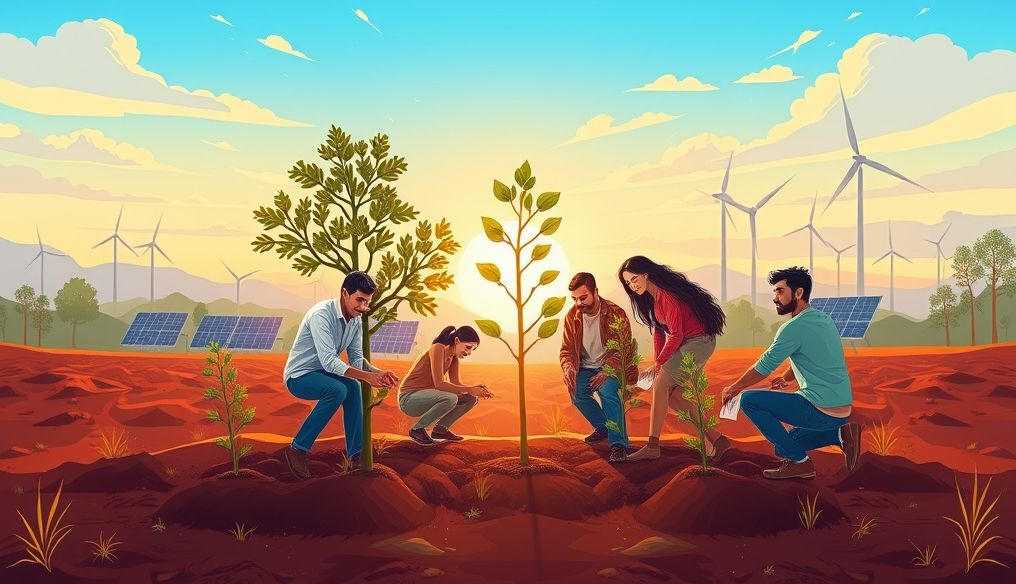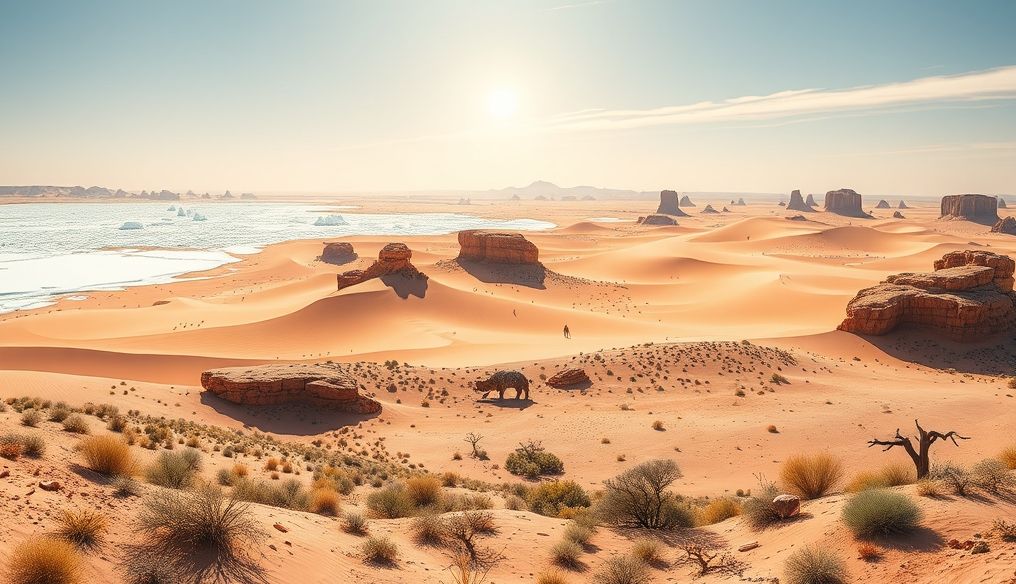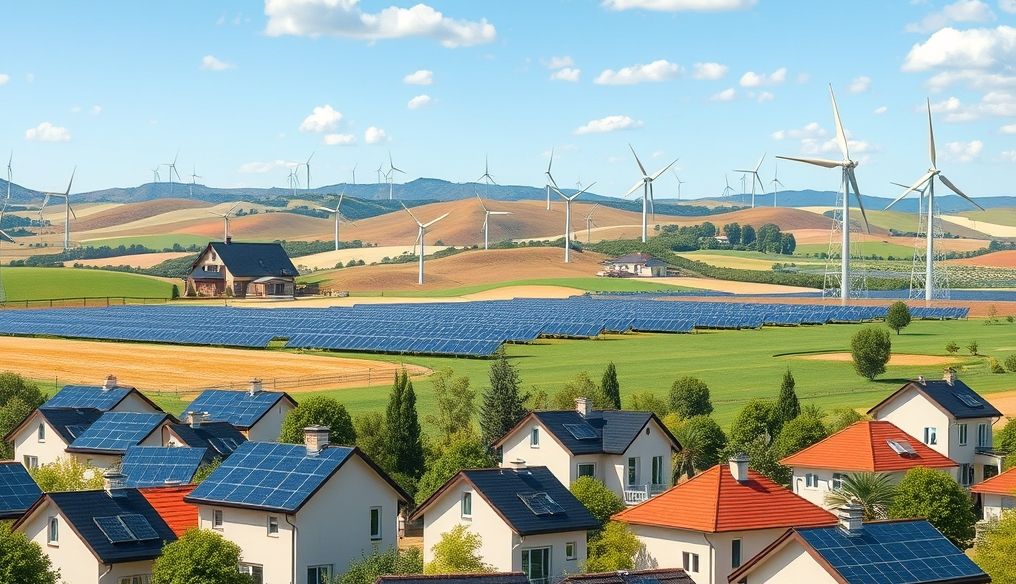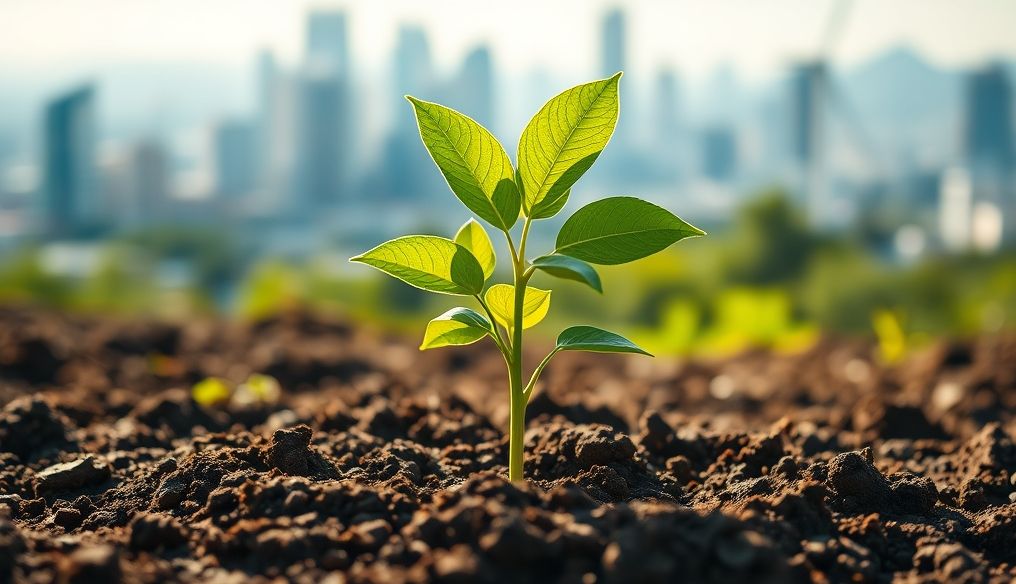Can We Really Reverse Climate Change? And What Are the Critical Steps to Achieve It?
Climate change is the biggest challenge facing humanity in the modern era. Rising temperatures, melting ice, rising sea levels, and increasing extreme weather events are just some of the symptoms of this disease that threatens our planet. The question that arises strongly is: Can we really reverse climate change? The answer is not simple, but it is hopeful: Yes, we can, but it requires tremendous efforts and radical changes in the way we live, produce, and consume.
Chapter 1: Understanding Climate Change and Its Devastating Effects
Before we talk about solutions, we must first understand the nature of the problem. Climate change is the result of the accumulation of greenhouse gases in the atmosphere, primarily carbon dioxide (CO2), methane (CH4), and nitrous oxide (N2O). These gases trap the sun's heat, leading to a rise in global temperatures.
The effects of climate change are manifested in:
- Global temperature rise: This leads to deadly heat waves, droughts, and forest fires.
- Melting ice and ice caps: This contributes to rising sea levels, threatening coastal cities and low-lying islands.
- Changing weather patterns: This leads to increased intensity and frequency of extreme weather events, such as hurricanes, floods, and droughts.
- Ocean acidification: This threatens marine life and affects global food sources.
- Loss of biodiversity: As many species cannot adapt to rapid climate changes, leading to their extinction.
Chapter 2: Reducing Greenhouse Gas Emissions: The Radical Solution
The most important solution to reverse climate change is to significantly and immediately reduce greenhouse gas emissions. This requires a radical transformation in the energy, transportation, industry, and agriculture sectors.
The most important steps in this area include:
- Transition to renewable energy sources: Such as solar energy, wind energy, hydropower, and geothermal energy.
- Increase energy efficiency: In buildings, factories, and transportation.
- Transition to sustainable transportation: Such as electric cars, bicycles, and public transportation.
- Develop carbon capture technologies: That absorb carbon dioxide from the air or from industrial emission sources.
- Reduce methane emissions: From the agricultural sector, especially from rice farms and livestock farming.
Chapter 3: The Role of Forests and Oceans in Carbon Absorption
Forests and oceans play a vital role in absorbing carbon dioxide from the atmosphere. Protecting and enhancing these ecosystems is essential to reversing climate change.
What can we do?
- Stop deforestation: And protect existing forests.
- Plant trees: And reforest degraded areas.
- Protect the oceans: And reduce marine pollution.
- Restore wetlands: Such as swamps and mangroves, which store large amounts of carbon.
Chapter 4: Adapting to Climate Change: Inevitable
Even if we can significantly reduce greenhouse gas emissions, some of the effects of climate change will continue for decades to come. Therefore, we must also adapt to these effects.
Adaptation strategies include:
- Building coastal defenses: To protect coastal cities from rising sea levels.
- Developing drought-resistant crops: To cope with water shortages.
- Improving water management: To ensure water availability for all.
- Developing early warning systems: For extreme weather events.
- Improving infrastructure: To make it more resistant to the effects of climate change.
Chapter 5: The Role of Technology and Innovation
Technology and innovation play a crucial role in developing new solutions to climate change. There are many promising technologies that can help us reduce emissions, adapt to the effects, and even reverse some of them.
Examples include:
- Carbon capture technologies: That absorb carbon dioxide from the air or from industrial emission sources.
- Advanced renewable energy technologies: Such as concentrated solar power, wave energy, and enhanced geothermal energy.
- Sustainable agriculture technologies: That reduce greenhouse gas emissions and improve crop productivity.
- Smart water management technologies: That help save water and improve water use efficiency.
Chapter 6: The Role of Government Policies and International Cooperation
Government policies and international cooperation are essential to achieving real progress in combating climate change. Governments must set ambitious emission reduction targets, implement policies that support the transition to a low-carbon economy, and invest in research and development in clean technology.
This includes:
- Imposing carbon taxes: To encourage companies and individuals to reduce their emissions.
- Providing financial incentives: To companies and individuals who invest in clean technology.
- Setting energy efficiency standards: For buildings, factories, and transportation.
- International cooperation: To exchange experiences and technology, and provide financial support to developing countries.
Chapter 7: The Role of Individuals and Communities
Every individual and every community can play a role in combating climate change. Small changes in our daily behavior can make a big difference.
What can you do?
- Reduce energy consumption: By turning off lights and electronic devices when not in use, and using energy-efficient light bulbs.
- Reduce car use: And use public transportation, bicycles, or walking.
- Reduce meat consumption: As meat production contributes significantly to greenhouse gas emissions.
- Recycle: And reduce waste.
- Support companies and organizations that adopt sustainable practices.
- Talk about climate change: And raise awareness among friends and family.
Chapter 8: Challenges and Obstacles
Reversing climate change is not an easy task. There are many challenges and obstacles that must be overcome.
The most important of these challenges:
- Political and economic resistance: From companies and individuals who benefit from the status quo.
- Lack of awareness: Of the importance of climate change and its dangers.
- Lack of funding: For research and development in clean technology.
- Social and economic inequalities: As the poorest groups are the most affected by climate change.
Chapter 9: A Look to the Future: Can We Win?
Despite the challenges, there is reason for optimism. Awareness of climate change is increasing, clean technology is developing rapidly, and government policies are gradually changing. If we can continue on this path, and increase our efforts, we can win the battle against climate change.
Conclusion: Reversing climate change is possible, but it requires tremendous efforts and radical changes in the way we live, produce, and consume. We must reduce greenhouse gas emissions, protect forests and oceans, adapt to the inevitable effects, invest in technology and innovation, and cooperate at the international and local levels. Every individual and every community can play a role in this effort. The future depends on it.




